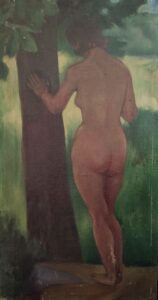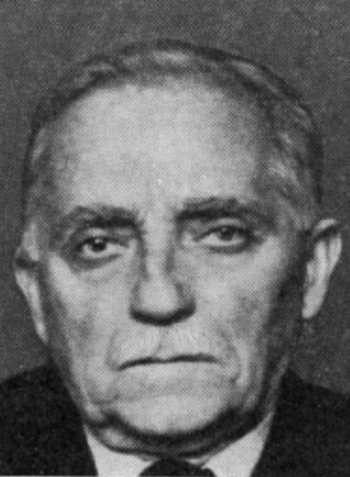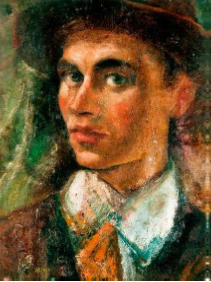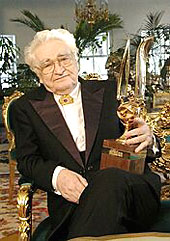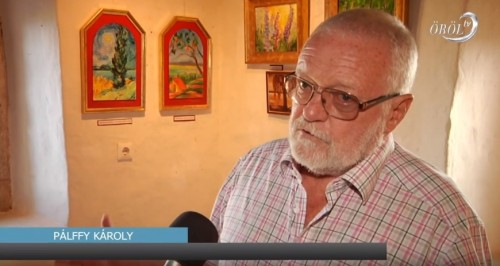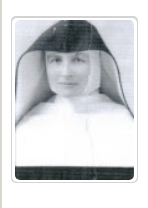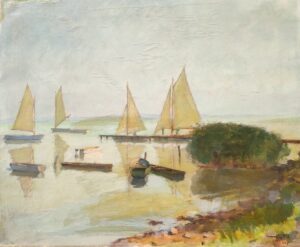
Béla Vidovszky
(1883 – 1973)
Port of Balaton, 1949
Original size: w65cm x h55cm
Technic: Oil painting
Signed bottom right: Vidovszky Béla 1949

Károly Pálffy
(1949 – )
Autumn Atmosphere, 2007
Original size: w50cm x h70cm
Technic: Oil painting
Signed bottom right: Pálffy Károly
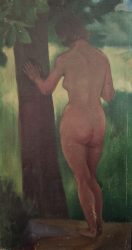
Unknown Painter
(~1900 – )
Lady
Original size: w35cm x h65cm
Technic: Oil painting
Signed: –
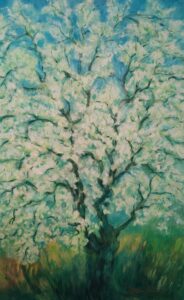
Károly Pálffy
(1949 – )
Flowering pear tree, 2007
Original size: w65cm x h100cm
Technic: Oil painting
Signed bottom right: Pálffy Károly
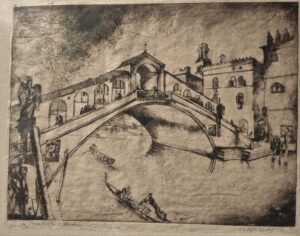
Endre Vadász
(1901 – 1944)
Ponte Rialto, 1928
Original size: w35cm x h25cm
Technic: engraving on paper
Signed bottom left: 4. Ponte Rialto, Venezia, bottom right: Vadász Endre 928
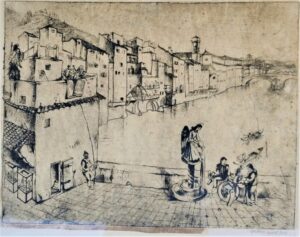
Endre Vadász
(1901 – 1944)
Ponte Vecchio, 1929
Original size: w35cm x h25cm
Technic: engraving on paper
Signed bottom left: “Ponte Vecchio”, bottom right: Vadász Endre 929
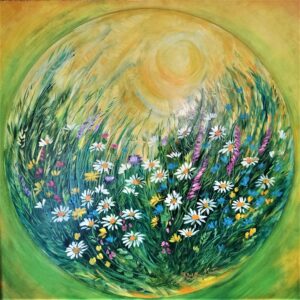
Károly Pálffy
(1949 – )
Wild flower, 2007
Original size: w70cm x h70cm
Technic: Oil painting
Signed bottom right in the circle: Pálffy Károly

Sister Nanica Gorgonia (Gerencsér)
(1908 – 1983)
Lillac flower, 1981
Original size: w60cm x h50cm
Technic: Oil Painting
Signed bottom right: Gorgonia A. Gerencser 1981
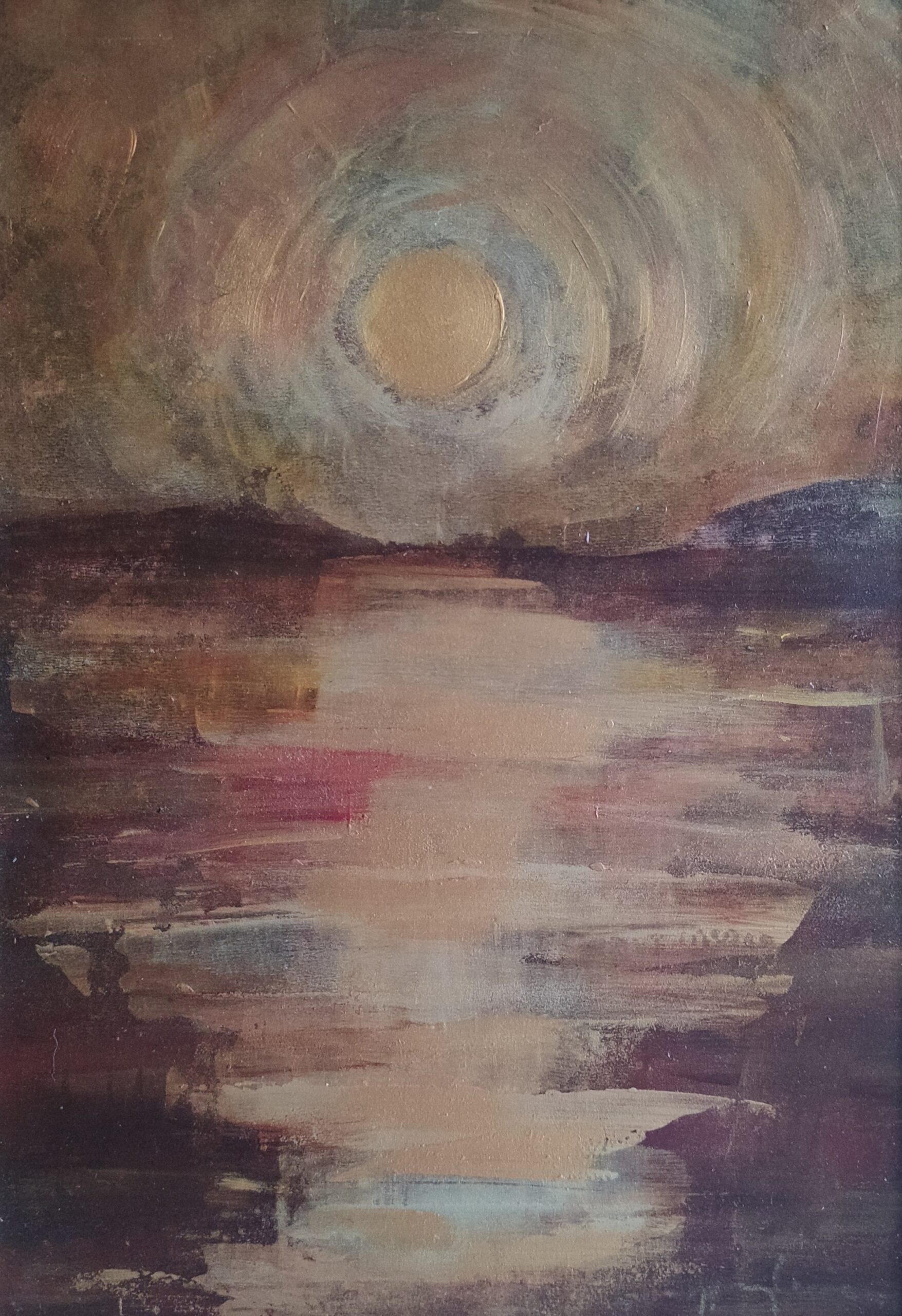
Károly Pálffy
(1949 – )
Sunset, 2007
Original size: w25cm x h35cm
Technic: Oil painting
Signed bottom right: Pálffy Károly

Károly Pálffy
(1949 – )
Badacsony, 2007
Original size: w25cm x h35cm
Technic: Oil painting
Signed bottom right: Pálffy Károly
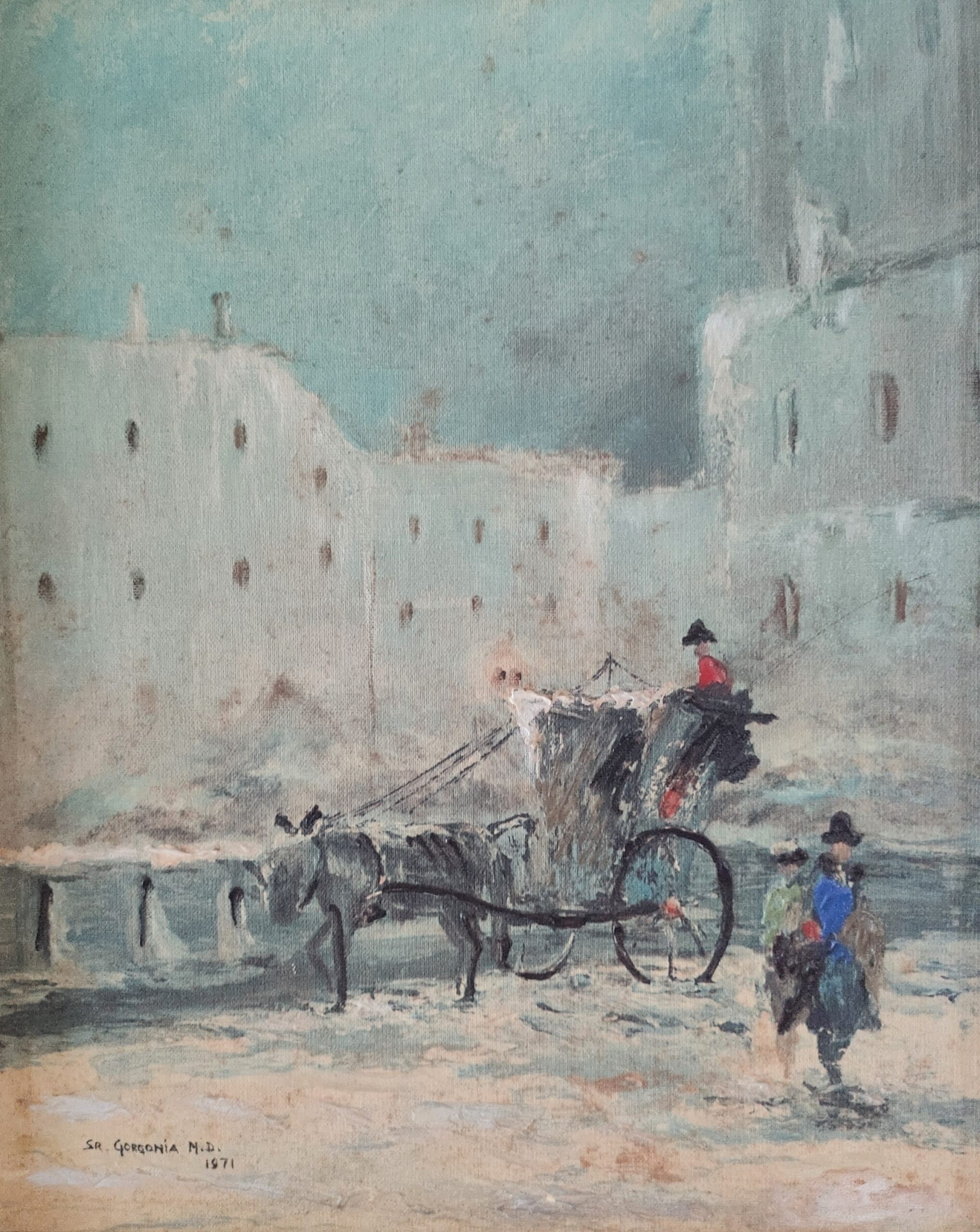
Sister Nanica Gorgonia (Gerencsér)
(1908 – 1983)
Donkey Cart, 1971
Original size: w40cm x h50cm
Technic: Oil Painting
Signed bottom left: SR. Gorgonia M.D. 1971
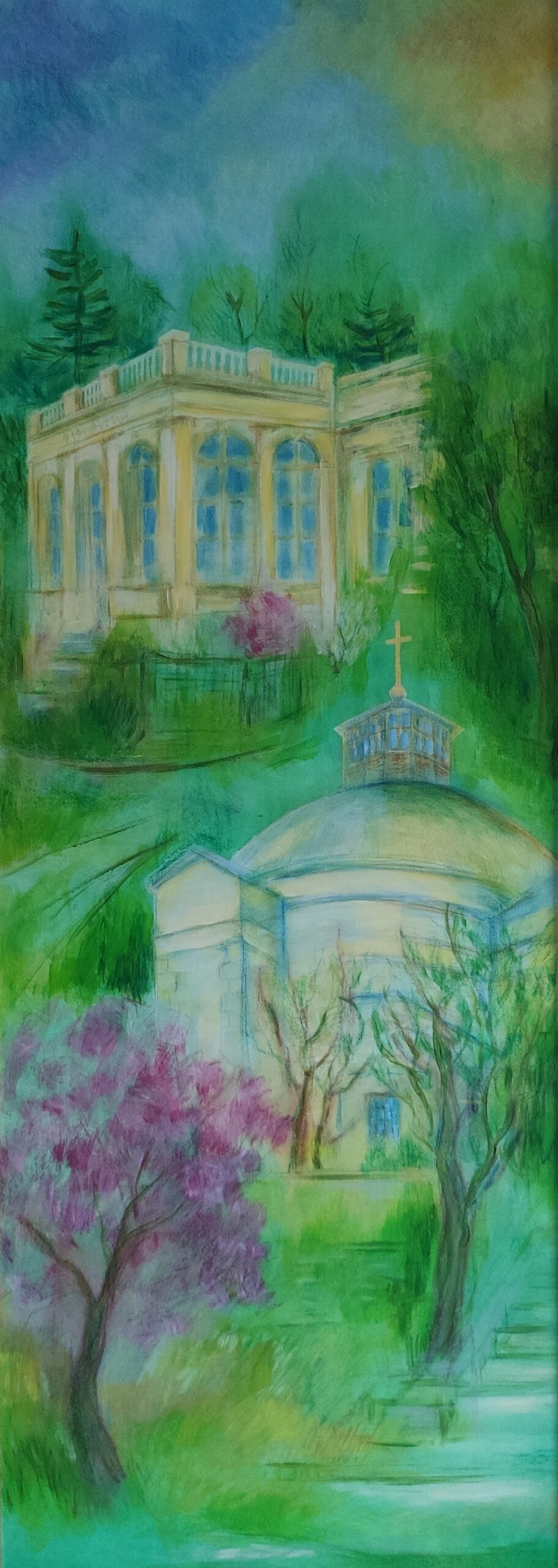
Károly Pálffy
(1949 – )
Walk in Füred 1., 2007
Original size: w40cm x h110cm
Technic: Oil painting
Marked on the back of the picture, top centre: “Füredi séta 1.”
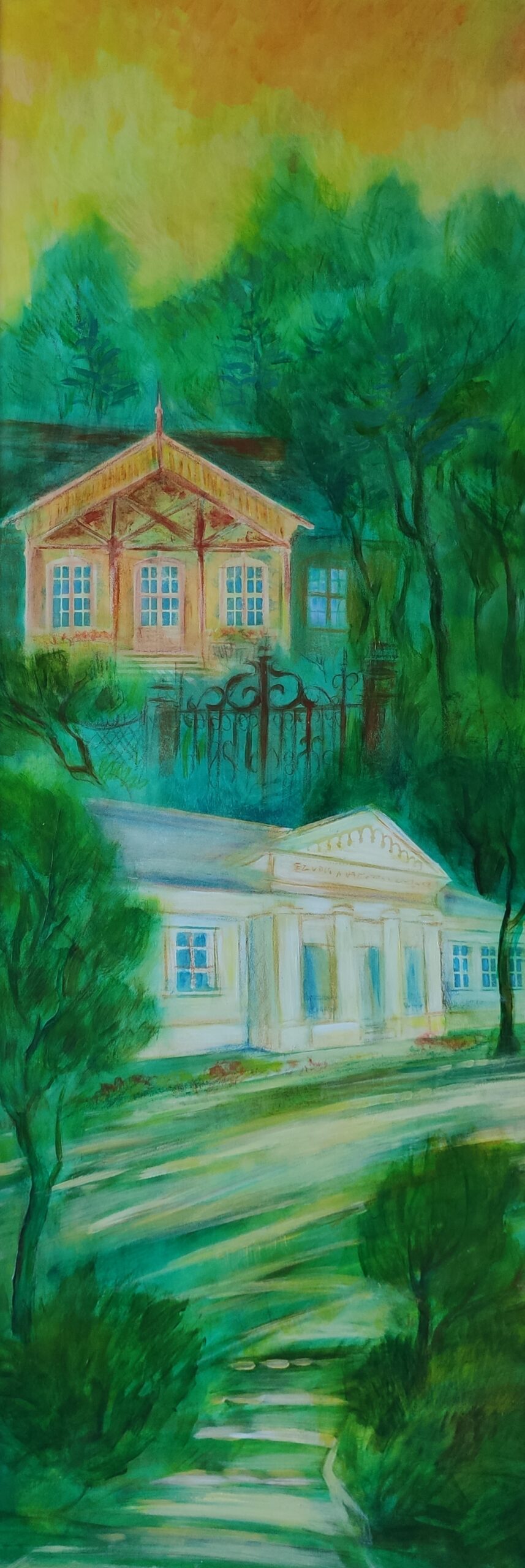
Károly Pálffy
(1949 – )
Walk in Füred 2., 2007
Original size: w40cm x h110cm
Technic: Oil painting
Marked on the back of the picture, top right: “2.”
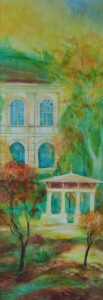
Károly Pálffy
(1949 – )
Walk in Füred 3., 2007
Original size: w40cm x h110cm
Technic: Oil painting
Marked on the back of the picture, top right: “3.”
Signed bottom right: Pálffy Károly
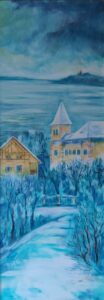
Károly Pálffy
(1949 – )
Walk in Füred 4., 2007
Original size: w40cm x h110cm
Technic: Oil painting
Marked on the back of the picture, top right: “4.”
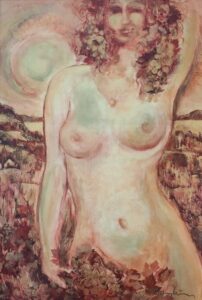
Károly Pálffy
(1949 – )
The Essence, 2007
Original size: w50cm x h70cm
Technic: Oil painting
Signed bottom right: Pálffy Károly

Sister Nanica Gorgonia (Gerencsér)
(1908 – 1983)
Still life with vines, 1971
Original size: w45cm x h35cm
Technic: Oil Painting
Signed bottom left: SR. Gorgonia M.D. 1971
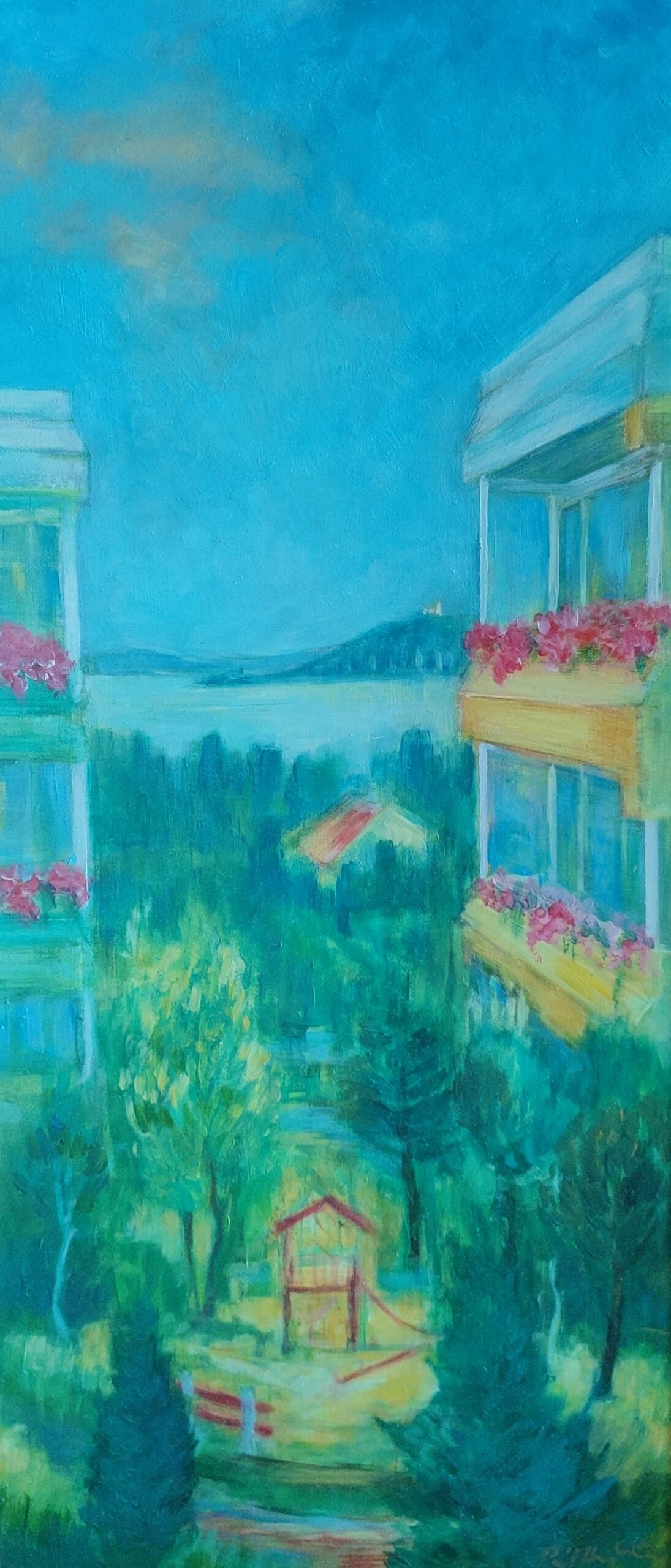
Károly Pálffy
(1949 – )
Estates in Füred, 2007
Original size: w30cm x h65cm
Technic: Oil painting
Signed bottom right: Pálffy Károly
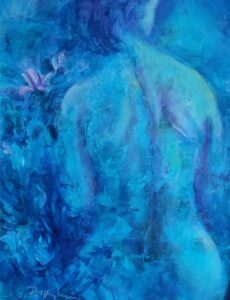
Károly Pálffy
(1949 – )
Night, 2007
Original size: w30cm x h38cm
Technic: Oil painting
Signed bottom left: Pálffy Károly
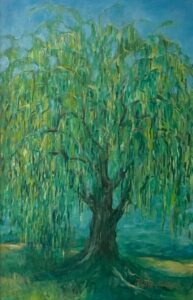
Károly Pálffy
(1949 – )
Weeping Willow, 2007
Original size: w65cm x h100cm
Technic: Oil painting
Signed bottom right: Pálffy Károly
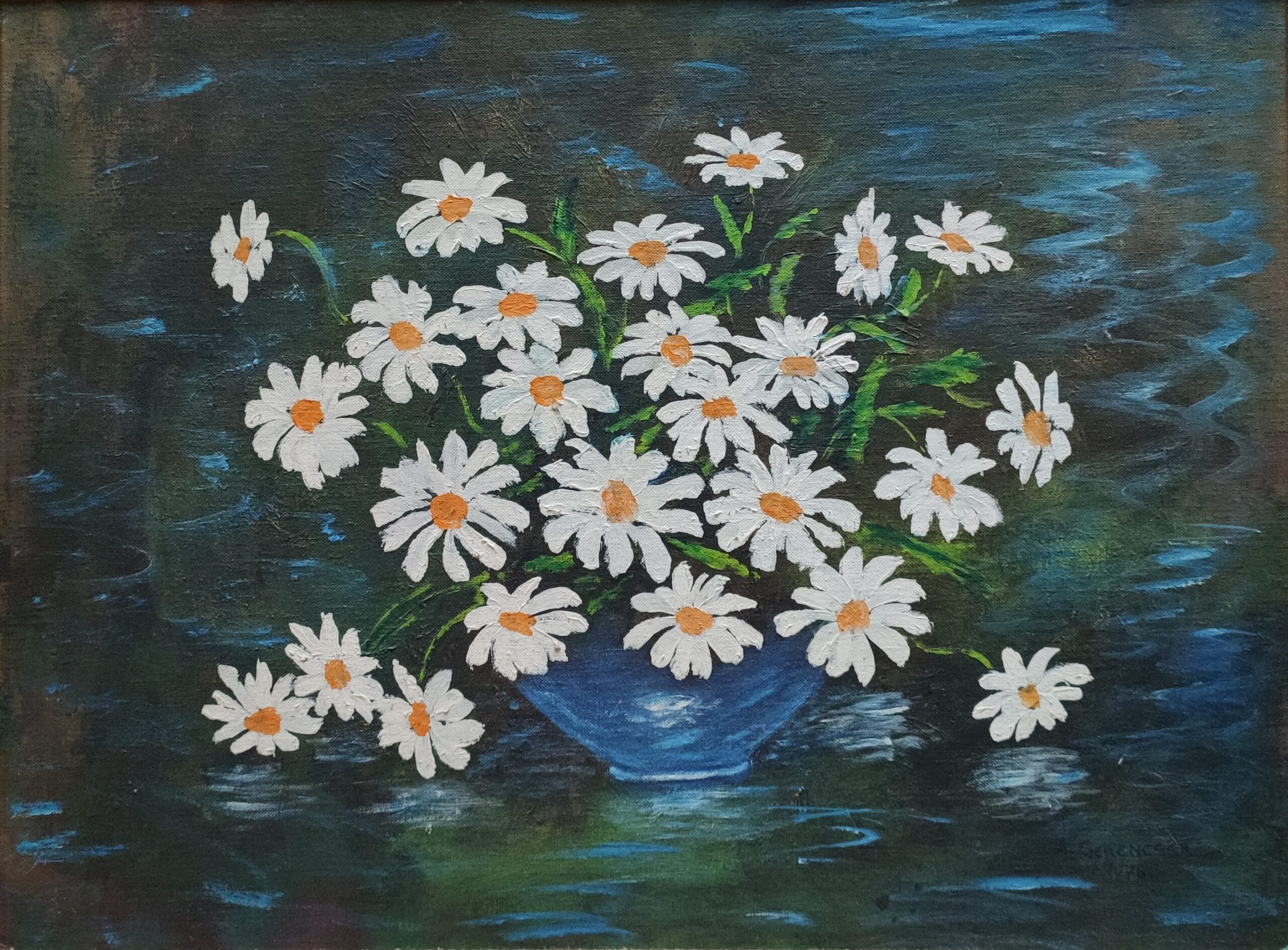
Sister Nanica Gorgonia (Gerencsér)
(1908 – 1983)
Daisy, 1976
Original size: w65cm x h45cm
Technic: Oil Painting
Signed bottom right: A. Gerencser 1976

